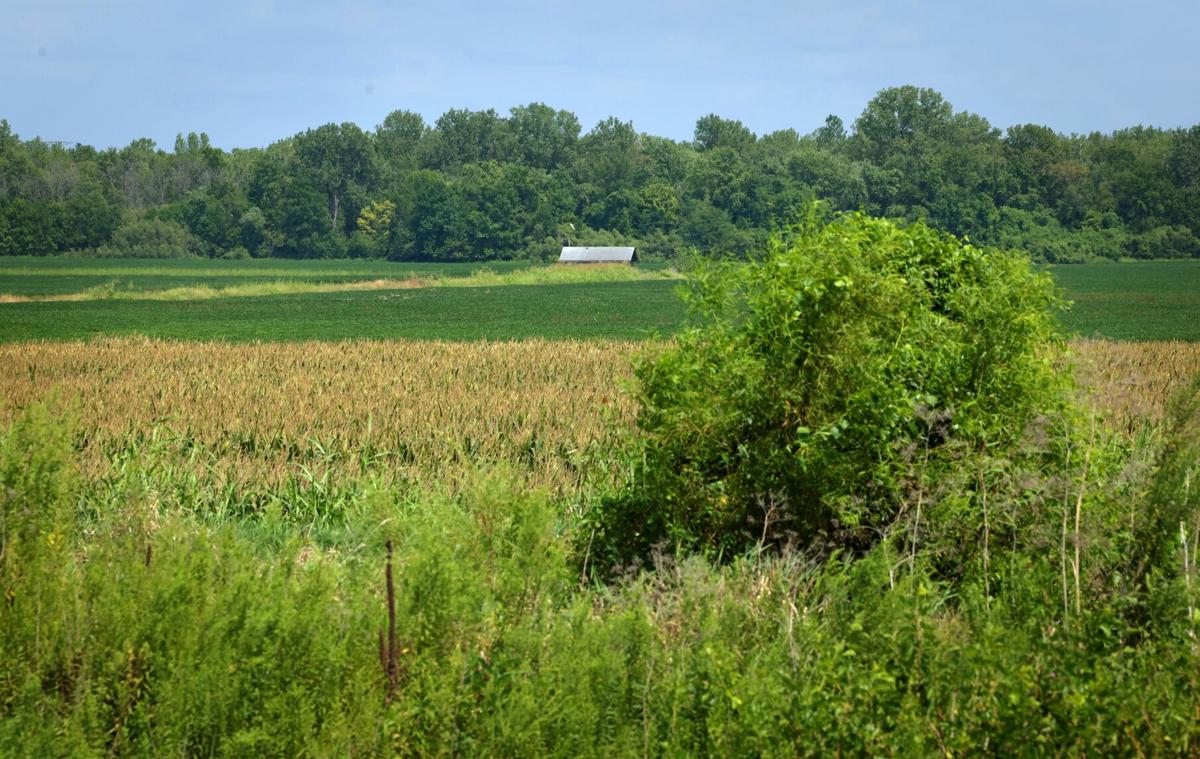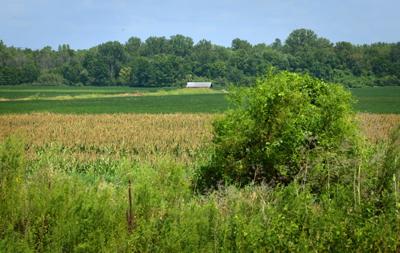ST. CHARLES — The now-scuttled St. Charles data center would have dumped five million gallons of water into Dardenne Creek and posed “significant and irreversible threats” to the environment, according to a prominent environmental group and the state conservation agency.
It would have displaced endangered or threatened animal and plant species, officials with the Missouri Department of Conservation said in a letter to St. Charles. And it would have caused increased flooding risks for residents living downstream in the rural community of Kampville, a conservation nonprofit wrote in a second letter.
“This project exemplifies the kind of short-sighted development Great Rivers Habitat Alliance was founded to oppose,” said alliance Executive Director J. Michael Checkett.
The data center was planned to be built on 440-acres along Highway 370 in north St. Charles, but the company on Monday withdrew the proposal in light of burgeoning public opposition to the data center, dubbed “Project Cumulus.”
People are also reading…
The company said it planned to retool the proposal and potentially resubmit it in the future. “The site still makes a ton of sense,” Korb Maxwell, a representative for the developer, said Tuesday. “But we have no timeline for when we will resubmit.”
Maxwell acknowledged public concerns, and said the company will do a better job addressing them. But he also said the project is changing. For instance, he said, the developer is now thinking it will dump wastewater into the St. Charles sewer system. And some wildlife concerns, which Maxwell said are limited to one section of the property, could be avoided.
Much of the public’s criticism of the project focused on the data center’s water and electricity consumption and what company would ultimately be using the facility. The sprawling complex, which would have consisted of five warehouses operating 24 hours a day, was a project of CRG, the development arm of construction giant, Clayco.
But environmental groups, such as the Missouri Department of Conservation and the Great Rivers Habitat Alliance, were also concerned about it.
In an Aug. 14 letter, Department of Conservation Director Jason A. Sumners urged the council to delay its vote, scheduled for Tuesday, to allow the organization more time to review the proposal, which had changed markedly since the department was first asked to consult on the project.
Initially, Sumners said, the state was told by engineering consultant Kimley-Horn, a North Carolina-based firm, that the project was a “potential light development.”
“It has since come to the department’s attention that this project is a data center with projected coolant water consumption of five million gallons of water per day discharging into Dardenne Creek,” Sumners wrote in his letter.
Assistant department director Aaron Jeffries told the Post-Dispatch on Tuesday that while such a discharge would have certainly raised the water level in the creek, the department was also concerned about the quality of the water being dumped.
“We had been told that the water inside the data center was going to be treated with a chemical,” he said. “We wanted to know what the chemical was, how it could be removed, and how it would have impacted the fish and invertebrates that are in the creek.”
In a town hall last week at the Foundry Art Centre in St. Charles, Kimley-Horn staff members explained the data center would have a “water circuit system” that would reuse the water four to five times. The project planned to get water from the commercial company Missouri American Water and from the city of St. �������Ƭ, representatives said.
Officials have not said how much water would be needed to cool the data center, which was designed to be temperature-controlled. Some water would be lost to evaporation, they said, as it passed through the water circuit system. The water would be “injected with chemicals,” but the staff did not identify what chemicals when asked by residents.
Moreover, the developer planned to dredge the Mississippi River, collecting sediment that would then be pumped through a network of pipes to the project site in order to raise it 15 feet out of the floodplain, similar to the process used to build Highway 370. But Jeffries said the department of conservation also only learned of that plan a few days ago — after Sumners’ letter.
Great Rivers, the conservation group, was especially concerned about the impact on the confluence of the Missouri and Mississippi rivers, according to the letter from Checkett, sent Aug. 18.
“The confluence is not a blank slate for industrial expansion — it is a living system that supports wildlife, agriculture, recreation and clean water,” he said.
The region is a critical stop for millions of migratory birds, both groups said.
“The confluence is a national treasure,” Checkett said, “containing important agricultural grounds that feed our families, wildlife habitats that sustain the fall and spring migrations of millions of migratory birds, riverine habitats that provide clean water for fishes, amphibians, reptiles and people.”
The conservation department also said the data center would have eliminated habitat for the endangered Indiana bat and threatened tricolored bat, Sumners said in his letter. It could have affected Bald Eagle nesting areas.
And it could impact the decurrent false aster, an endangered white daisy-type flower that exclusively grows in St. Charles County. The flower, which primarily grows in wetlands, marshes, and lakes, was prevalent in the marshes that once stretched across northeastern St. Charles County.
Jeffries said the importance of eagles, bats and flowers should not be overlooked.
The bats, he said, consume a significant number of insects that could adversely impact farmers’ crops. If the bats go away, farmers would have to use additional chemicals to ward insects off their farm fields.
“Every species is valuable,” he said. “And once you lose it, you lose it forever.”
Post-Dispatch photographers capture tens of thousands of images and hours of footage every year. See some of their best work from July 2025 here.




















